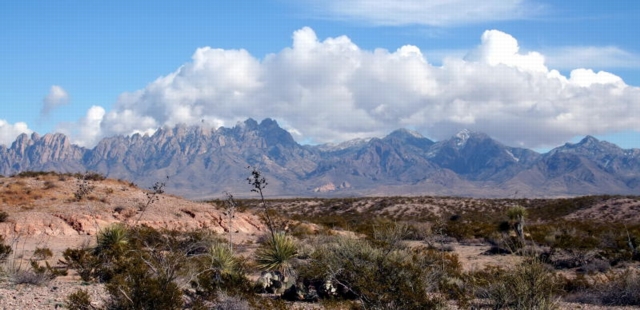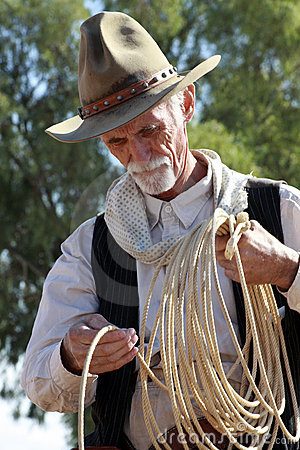So Where Is The Southwest?
 So where is the Southwest in this country? Depends on whose map you look at or whose definition you agree with. Just tonight I looked at about eight or ten maps of what were supposed to be our Southwest. Almost none of them agreed with one another. Some said the Southwest was just four states–Arizona, New Mexico, Texas and Oklahoma. I couldn’t agree with that. Others included Oregon and Northern California Wrong again! Others included the whole of Utah, Colorado, and Nevada. They got it half right. The southern halves of those states are part of the Southwest, but not the whole state in each case.
So where is the Southwest in this country? Depends on whose map you look at or whose definition you agree with. Just tonight I looked at about eight or ten maps of what were supposed to be our Southwest. Almost none of them agreed with one another. Some said the Southwest was just four states–Arizona, New Mexico, Texas and Oklahoma. I couldn’t agree with that. Others included Oregon and Northern California Wrong again! Others included the whole of Utah, Colorado, and Nevada. They got it half right. The southern halves of those states are part of the Southwest, but not the whole state in each case.
What started me off on this was that, two Sundays ago, my wife and I celebrated our 50th wedding anniversary. Folks at our church put on a big spread for us and most of the church members came. One man happened to say that I had lived in the Southwest awhile back. Actually, I had lived in Oklahoma, a state that is a mix of South Central and Southwest, the same as Texas is, though I had spent quite a bit of time in the Southwest. Someone else commented that he was not aware that Oklahoma was part of the Southwest. Well, it is and it isn’t, depending on where you are at. Same as Texas.
I commented to the second gentleman that where you lived in Oklahoma depended on whether or not you were in the Southwest. Where we lived was probably not far enough west to be considered Southwestern, but I estimate that, probably the western third of Oklahoma is probably considered the Southwest, along with all of West Texas, Southwestern Kansas (yes, even part of Kansas), Southern Colorado, Southern Utah, Southern Nevada, even Southern California–all are part of the Southwest along with Arizona and New Mexico. Most people don’t think of anything but Arizona and New Mexico when they think of the Southwest. Those two states are “it” for them as far as the Southwest is concerned. It’s kind of like, when I was growing up back in the East, everybody there thought all cowboys automatically came from Texas. For them, no other state need apply with any cowboys but Texas. You’d be surprised at how many people used to be shocked when they found out Oklahoma actually had cowboys in it.
Back when I was in my late 20s, my Dad sold the house he had owned in the East and bought a trailer big enough for him, my Mom, and I, and I guess all my talking about the West made some impression on him because we took the trailer and headed west. I guess, for awhile at least, we were like gypsies. Wherever we parked that trailer on any given night was “home.”
That particular year we got as far west as Santa Fe, New Mexico, a place we had been before and liked it. We started checking around for work in that area. At that point in time, New Mexico was sort of a depressed area. There was no work, not even for the residents of that area and folks were not bashful about telling us they’d put their own folks to work before “outsiders.” I can understand that.
At that point, we gradually started working our way east and crossed back into the Oklahoma Panhandle–which is part of the Southwest. I don’t know how it is there now, but at that time I used to say that the Oklahoma Panhandle had about six trees in it–and one of them had died! It was a wide-open country where it seemed they didn’t even fence the range sometimes, at least along the highways–and that may have been because they didn’t have all that much traffic. But if you got out and walked up on the mesa top you found that the land was fenced between one piece of property and another and if you wanted to keep walking when you came to a fence, you were real careful and you crawled under the barbed wire. The Oklahoma Panhandle looked real flat if you just drove across it and didn’t stop. It wasn’t. There were all manner of ravines, high spots, low spots, and in its own way the Oklahoma Panhandle had a kind of beauty you learned to appreciate, especially if you walked over some of it. While in Western Oklahoma we camped at Black Mesa State Park, both headed west and coming back. It was a place you got used to the wind blowing 40 mph all day and night. It didn’t even stop to catch its breath!
One interesting thing that ran through that area was the old Cimarron Cutoff for the old Santa Fe Trail. When we were there you could still see parts of it. You could tell where it was because the wagon traffic had been so heavy in earlier days that the sagebrush and prickly pear cactus had never grown back on the trail and the trail, about 30 feet wide most places, was just bare sand. I stumbled across it one day and followed it for a few miles, crawling under barbed wire as needed.
But eventually we had to go farther east and we checked for possible work all across Oklahoma, not finding anything that you could get hired for for more than a couple hours a day. Oklahoma was depressed like New Mexico. We finally ended up back at the western end of what they called the Osage Hills, or just “the Osage.” Wasn’t much work there either, though we did fill out applications for work in the state park system and went down to Oklahoma City to talk to some bureaucrat about that. A wasted trip except for stopping at the Cowboy Hall of Fame while in Oklahoma City. There was an art show there and I got a chance to study the work of some of the best Western artists in the country at that time. As I was trying to work my way into painting Western Americana, that was a God-send for me.
And while I did manage to sell a few canvasses while in Oklahoma, it sure was not enough to live on and I sure didn’t get wealthy from it. Had we made a go of it in Oklahoma we probably would have stayed there, in which case I never would have gotten to marry my wife and there would have been no 50th wedding anniversary recently, so I expect the Lord had a different agenda for me than what I would have done had we stayed in Oklahoma. As much as I enjoyed Oklahoma, I can’t complain now about having had to leave at that point.
Besides, since then, I’ve been able to take my wife and kids back to Oklahoma and they’ve enjoyed it as much as I did, so the Lord “works all things out together for good to those who are the called according to His purposes.”
July 3, 2019
 ~ The Author ~
~ The Author ~
Al Benson Jr. is the editor and publisher of “The Copperhead Chronicle“, a quarterly newsletter that presents history from a pro-Southern and Christian perspective. He has written for several publications over the years. His articles have appeared in “The National Educator,” “The Free Magnolia,” and the “Southern Patriot.” I addition to that he was the editor of, and wrote for, “The Christian Educator” for several years. In addition to The Copperhead Chronicles, Al also maintains Revised History.
He is currently a member of the Confederate Society of America and the Sons of Confederate Veterans, and has, in the past, been a member of the John Birch Society. He is the co-author, along with Walter D. Kennedy, of the book “Lincoln’s Marxists” and he has written for several Internet sites as well as authoring a series of booklets, with tests, dealing with the War of Northern Aggression, for home school students.
Mr. Benson is a highly respected scholar and writer and has graciously allowed the family of Kettle Moraine Publications to publish his works. We are proud to have his involvement with this project.
He and his wife now live in northern Louisiana.
